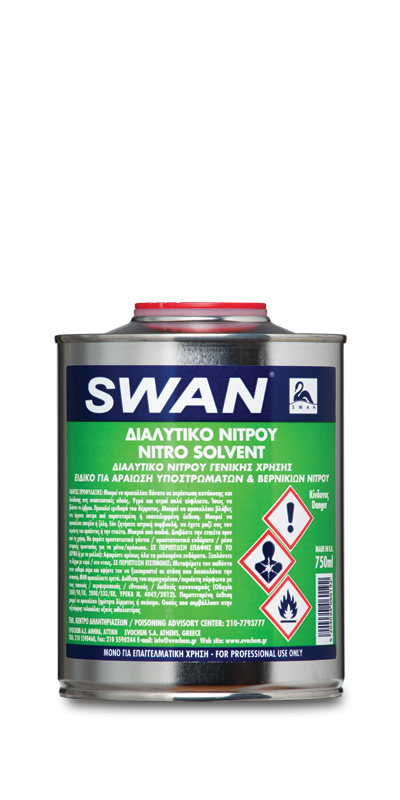SWAN NITRO SOLVENT
€0.00
Waterbased paint ideal for interior ceilings, staircases, storage rooms
SWAN HYDRO EMULSION PAINT is waterbased paint ideal for ceilings, staircases, storage rooms, suitable for interior use. It is an economic solution for areas where resistance to stains and washing is not required. It has a special formulation that allows surface breathing. It offers very good coverage, smooth finish with resistance in ageing. It is suitable for plaster and lime.
ADVANTAGES
- Very good coverage
- Bright white finish
- High resistance to ageing
- Allows surface breathing
- Easy application
APPLICATIONS
- It is suitable for ceilings, staircases, storage rooms etc.
- It is suitable for plaster and lime surfaces.
| † |
† |
† |
† |
|
Coverage: 10 – 15 m2/Lt |
Thinning: 10 – 15% with clean water |
Application: by brush |
Application: by roller |
| † |
† |
† |
† |
|
Application: by spray gun |
Touch dry: 2 hours 20oC |
Hard dry: 5 hours 20oC |
Interior use |
| † |
† |
† | † |
|
Application temperature: 10oC – 35oC |
Cleaning: with water |
† | † |
Surface Preparation
- All surfaces should be dry and clean from dirt, grease, loose paint etc.
- New surfaces should be allowed to dry out completely
- Surfaces previously painted with lime or watercolors and exhibit cohesion problems and detachment, should be cleaned by removing previous layers with mechanical means.
- Fill minor defects with STANDARD filler. For large gaps Äì joints use FLEX filler. New surfaces may be smoothed with resin fortified acrylic surface filler ISOMIX WALL STUCCO.
- New surfaces as well as surfaces previously painted with low quality paint should be primed with waterbased acrylic primer ISOCRYL DUR AQUA or with solvent based primer ISOCRYL DUR.
Application
Apply SWAN HYDRO PAINT with a roller, brush or airless spray in two coats diluted 10-15% with clean water.
LEAD STATEMENT
WARNING: Treatment of old surfaces such as dry sanding, flame cutting and/or welding of the dry paint film will give rise to dust and/or hazardous fumes. Lead dust may be released. Lead is toxic. Exposure to lead dust can cause serious illness. Wet sanding/flatting should be used wherever possible. If exposure cannot be avoided by the provision of local exhaust ventilation, suitable respiratory protective equipment should be used.




